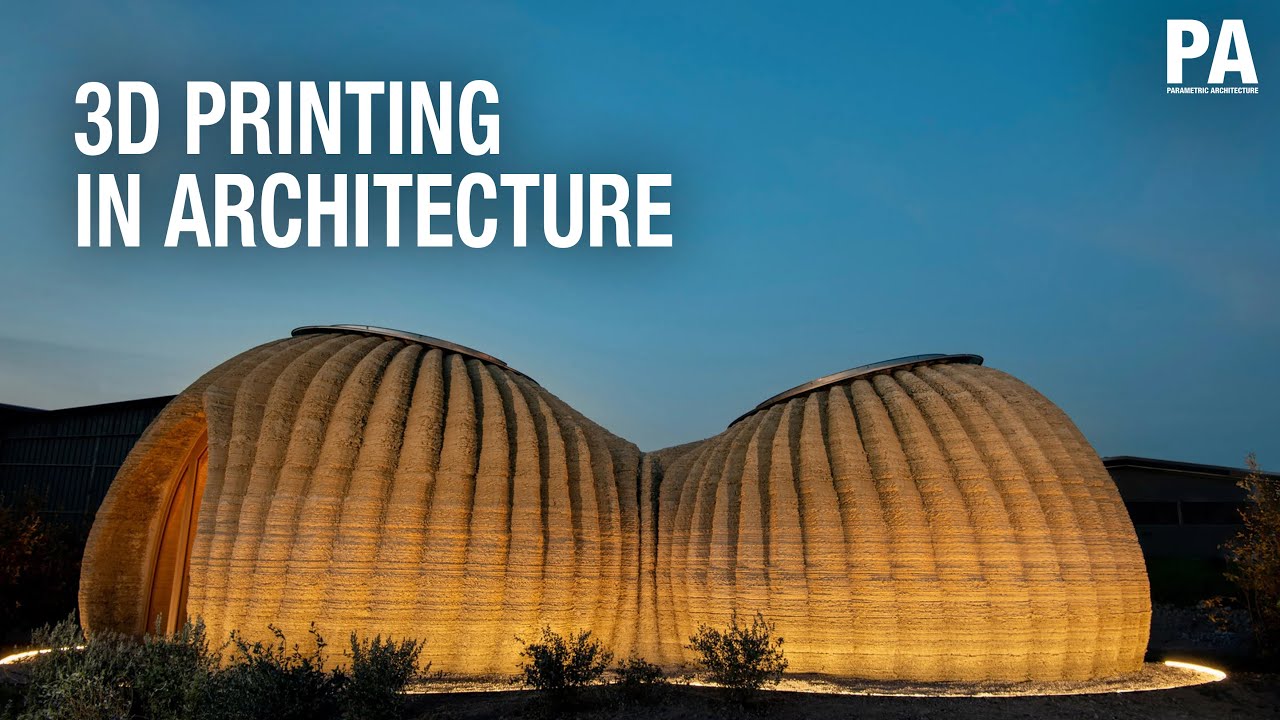Examining The Role Of 3D Printing In Architectural Design And Construction
Examining the role of 3D printing in architectural design and construction has revolutionized the way architects and designers approach the construction industry. In recent years, 3D printing has been increasingly adopted in the field of architecture to produce prototypes, models, and even complete buildings.
Author:George EvansMar 22, 20235.5K Shares264.9K Views

Examining the role of 3D printing in architectural design and constructionhas revolutionized the way architects and designers approach the construction industry. In recent years, 3D printing has been increasingly adopted in the field of architecture to produce prototypes, models, and even complete buildings.
This technology has the potential to reduce construction costs, increase efficiency, and allow for greater customization and design flexibility. This article will examine the role of 3D printing in architectural design and construction, exploring its benefits, challenges, and potential future applications.
The Benefits Of 3D Printing In Architecture
One of the primary benefits of 3D printing in architectureis the ability to create complex geometries that would be impossible to achieve using traditional construction methods.
3D printing allows architects to create intricate shapes and structures with ease, opening up new possibilities for design. In addition, 3D printing can be used to create models and prototypes of buildings before construction begins, allowing for greater precision and accuracy in the design process.
Another advantage of 3D printing is its potential to reduce construction costs. Traditional construction methods require a significant amount of manual labor, which can be expensive and time-consuming.
3D printing, on the other hand, is automated and can be completed quickly and efficiently. This means that less labor is required, resulting in lower costs and faster construction times.
3D printing also offers greater customization and design flexibility. Architects can create unique designs that are tailored to the specific needs of a project.
This allows for greater creativity and innovation in the design process, as well as the ability to respond to changing requirements or unexpected challenges during construction.
Greater Design Flexibility
3D printing technology allows architects and designers to create complex and intricate designs that would be difficult or impossible to achieve with traditional manufacturing methods. With the ability to create custom shapes and sizes, architects can explore new design possibilities and push the boundaries of what is possible in architecture.
This level of design flexibility is particularly useful in creating unique and innovative building facades, as well as in the creation of custom interior fixtures and fittings.
Increased Efficiency And Sustainability In Construction
3D printing can also increase efficiency and sustainability in construction. The technology allows for the creation of precise and accurate parts and components, reducing waste and material usage.
This precision also leads to faster and more efficient construction processes, as components can be prefabricated off-site and assembled quickly on-site. This can significantly reduce construction time and costs while improving the quality of the final product.
Examining The Role Of 3D Printing In Architectural Design And Construction
The role of 3D printing in architectural design and construction is becoming increasingly important as technology continues to evolve and improve.
3D printing, also known as additive manufacturing, is a process that involves the creation of three-dimensional objects by building up layers of material, often using a digital model as a blueprint.
Challenges And Limitations
While 3D printing offers many benefits, there are also several challenges and limitations to consider. One of the main limitations of 3D printing in architecture is the size of the objects that can be printed.
Most 3D printers are limited in size, which means that larger structures may need to be printed in sections and then assembled on-site. This can be time-consuming and may require additional materials and labor.
Another challenge is the limited range of materials that can be used in 3D printing. While there are many materials available for 3D printing, not all of them are suitable for construction purposes.
Currently, most 3D-printed buildings are made from concrete, which limits the design options and may not be suitable for all projects.
In addition, 3D printing technology is still relatively new and not yet widely adopted in the construction industry. This means that there may be a lack of expertise and experience in using this technology, as well as a need for further research and development to optimize its use in construction.
Future Applications
Despite its challenges, 3D printing has enormous potential for the future of architectural design and construction.
As technology continues to evolve, 3D printing will likely become increasingly sophisticated and capable of producing larger and more complex structures. This could lead to the creation of entirely new building typologies and construction methods.
One potential application of 3D printing in architecture is the creation of sustainable buildings. 3D printing can be used to create structures that are more energy-efficient and environmentally friendly, reducing the carbon footprint of the construction industry.
In addition, 3D printing can be used to produce buildings that are better suited to their environment, taking into account factors such as solar orientation, wind patterns, and local climate.
Another potential application of 3D printing is in disaster relief and emergency housing. 3D printing technology could be used to quickly produce temporary shelters and housing for people affected by natural disasters or other emergencies.
This would provide a fast and efficient way to provide shelter to those in need, without the need for traditional construction methods.

3D Printing in Architecture
The Role Of 3D Printing In Construction Site Planning
3D printing can also play a significant role in construction site planning. With the use of 3D printing technology, architects and builders can create detailed 3D models of the building and the surrounding environment, allowing for better visualization and analysis of the site.
This can help to identify potential issues and design flaws before construction begins, reducing the risk of costly mistakes.
In addition, 3D printing can be used to create accurate and detailed models of the building components, such as structural elements and MEP (mechanical, electrical, and plumbing) systems. This allows for more efficient and precise construction, reducing waste and increasing productivity.
3D printing can also be used to create custom tools and fixtures for construction projects. This includes scaffolding, formwork, and other specialized equipment. With 3D printing, these tools can be quickly and easily created on-site, reducing the need for manual labor and improving safety on the construction site.
People Also Ask
What Is 3D Printing Technology?
3D printing is a manufacturing process that creates three-dimensional objects by building up layers of material, typically using a digital model as a blueprint.
How Can 3D Printing Benefit Architecture?
3D printing can benefit architecture by offering greater design flexibility, increased efficiency, improved sustainability, and improved safety on job sites.
What Kind Of Designs Can Be Created With 3D Printing Technology?
3D printing allows for the creation of complex and intricate designs that would be difficult or impossible to achieve with traditional manufacturing methods.
What Materials Can Be Used In 3D Printing?
A variety of materials can be used in 3D printing, including plastics, metals, and ceramics.
Can 3D Printing Reduce Waste In Construction?
Yes, 3D printing can reduce waste in construction by allowing for the creation of precise and accurate parts and components, which reduces material usage.
Conclusion
Examining the role of 3D printing in architectural design and construction printing has enormous potential for the future of architectural design.
While there are still limitations and challenges to overcome, the benefits of 3D printing in architecture are clear. It offers greater design flexibility, customization, and efficiency, as well as the potential to reduce construction costs and improve sustainability.
As technology continues to evolve, 3D printing will likely become an increasingly important tool in the construction industry, leading to new possibilities and innovations in architectural design and construction.

George Evans
Author
George Anderson, an exceptional architectural designer, envisions and brings to life structures that transcend the realm of imagination. With an unwavering passion for design and an innate eye for detail, George seamlessly blends form and function, creating immersive spaces that inspire awe.
Driven by a deep appreciation for the interplay of space, light, and materials, George's innovative approach redefines the possibilities of architectural design. His visionary compositions leave an indelible mark, evoking a sense of wonder and transforming the built environment.
George Anderson's transformative designs and unwavering dedication continue to shape the architectural landscape, pushing the boundaries of what is possible and inspiring generations to come.
Latest Articles
Popular Articles
